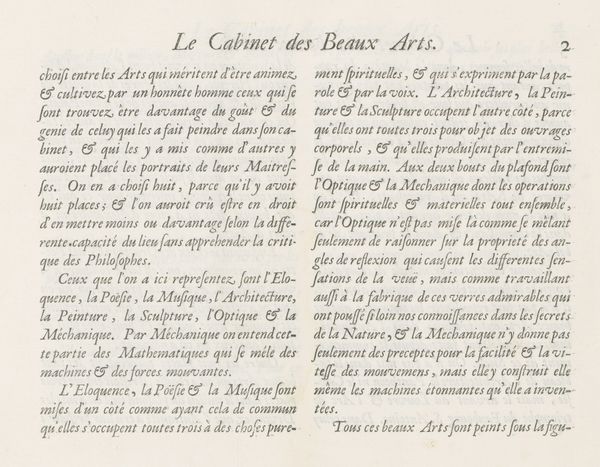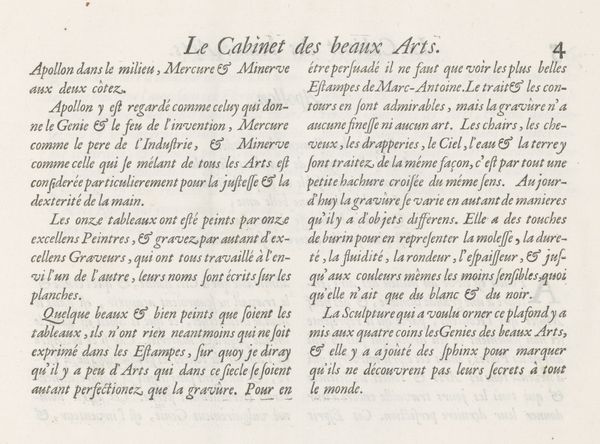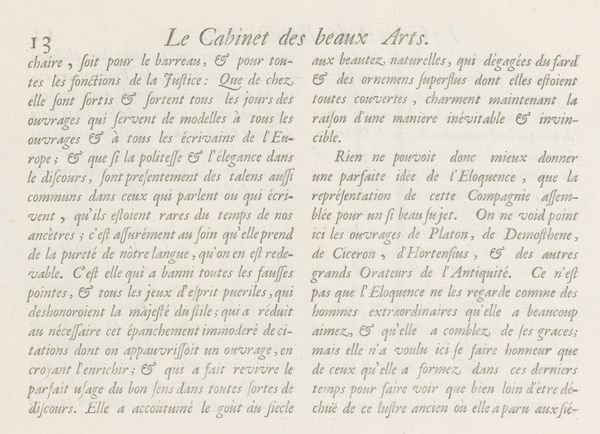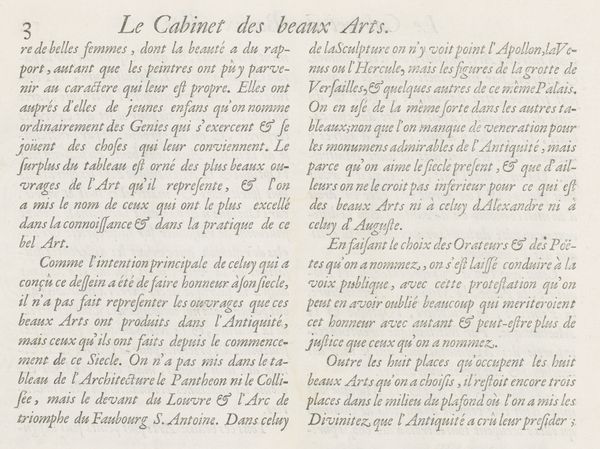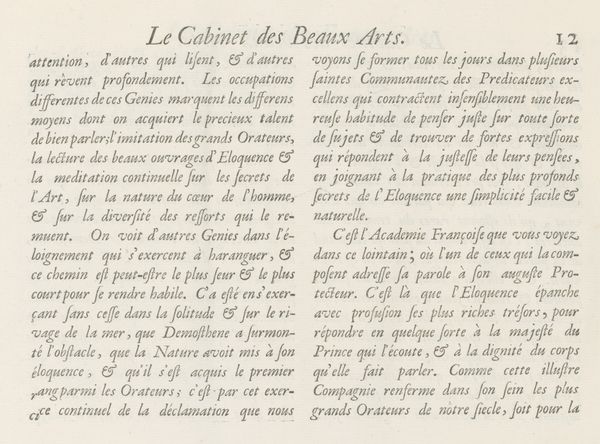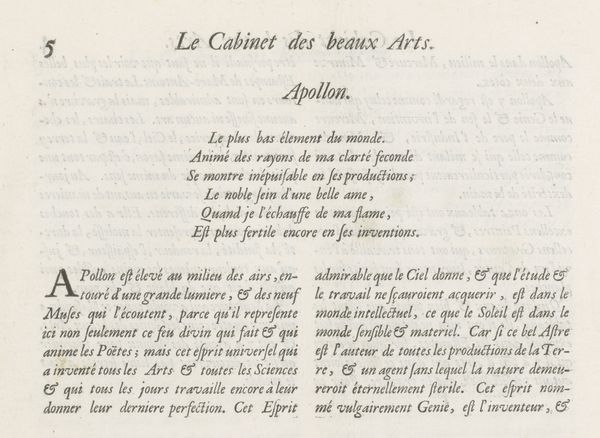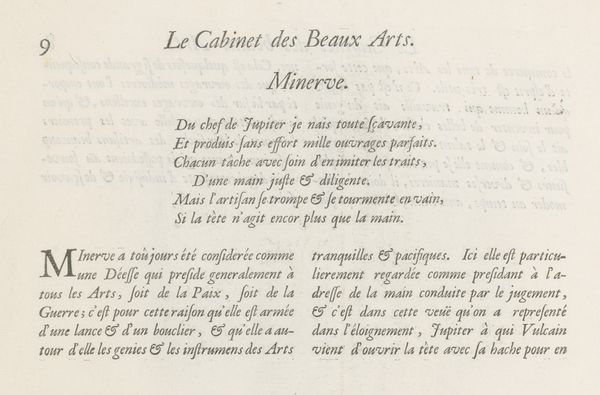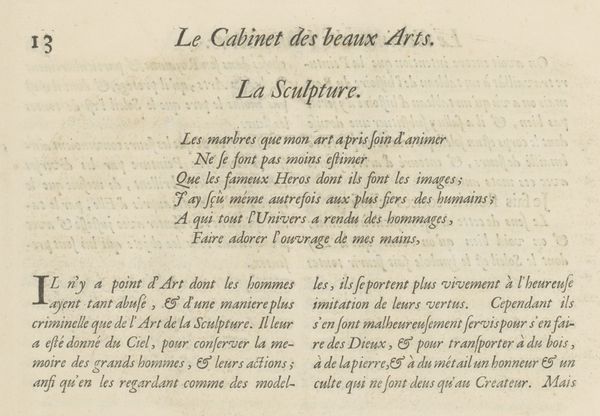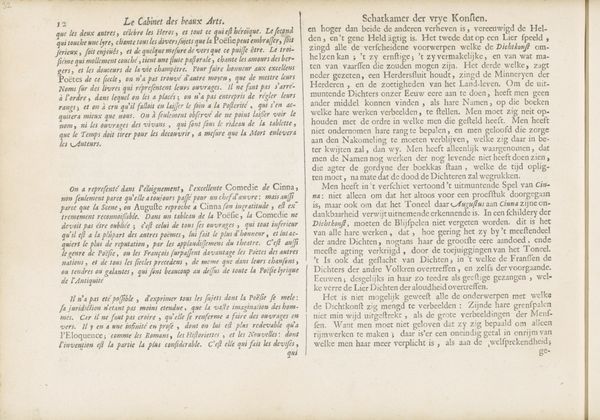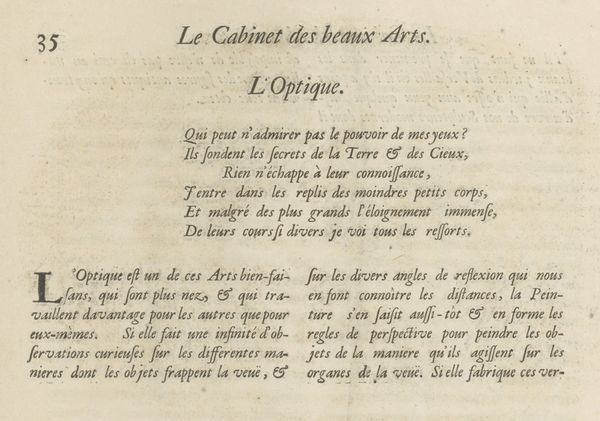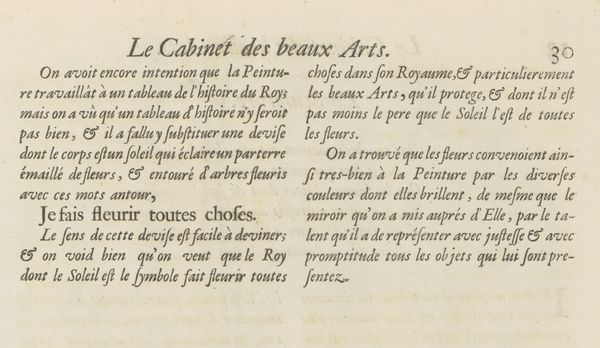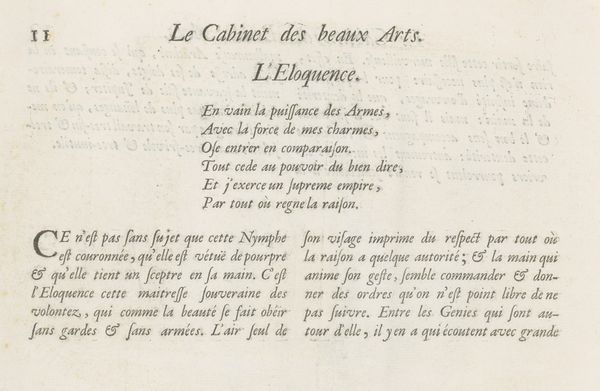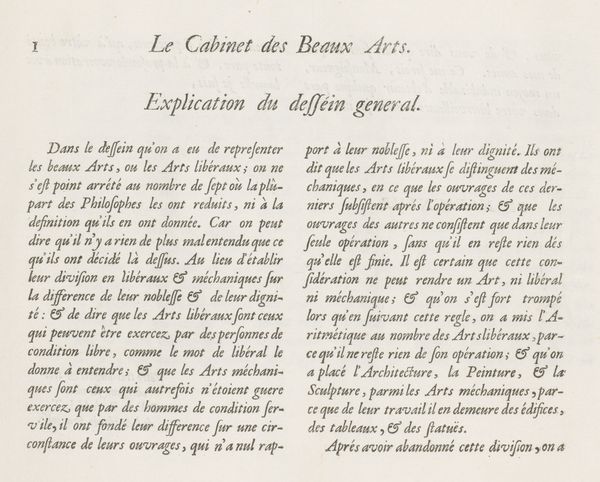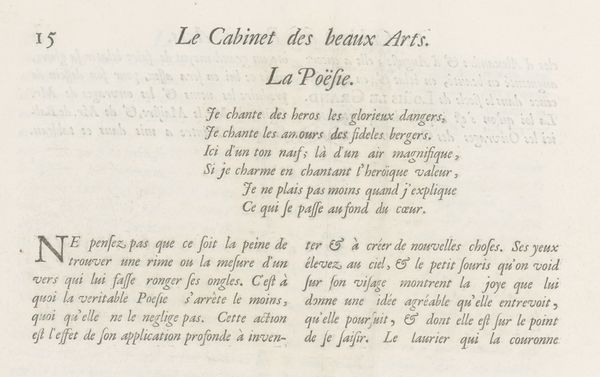
graphic-art, print, typography, engraving
#
graphic-art
#
hand-lettering
# print
#
hand drawn type
#
hand lettering
#
paragraph style
#
typography
#
hand-drawn typeface
#
fading type
#
stylized text
#
thick font
#
handwritten font
#
engraving
#
small lettering
Dimensions: height 281 mm, width 380 mm
Copyright: Rijks Museum: Open Domain
This text page, extracted from an unknown book on Mechanics by Charles Perrault, offers us a glimpse into the relationship between art, mechanics, and societal power in the late 17th century. Perrault's description, in French, situates mechanics as the soul of other arts. The writing emphasizes how mechanics enable architecture to honor man through disproportionate size, and facilitate military advancements. This is a period marked by burgeoning scientific inquiry, yet Perrault's enthusiastic tone also betrays a cultural obsession with grandeur and control. The reference to Versailles is particularly telling; here, mechanics are seen as tools to dominate nature, reshape landscapes to reflect royal power. By linking mechanics to military prowess, Perrault implicitly acknowledges its role in colonial expansion. He positions mechanics as surpassing even magic, reflecting a shift towards valuing empirical knowledge. But what do we lose when we prioritize power and grandeur? It’s as if this text invites us to consider mechanics not as a neutral science, but as a cultural force deeply entangled with ambition.
Comments
No comments
Be the first to comment and join the conversation on the ultimate creative platform.
